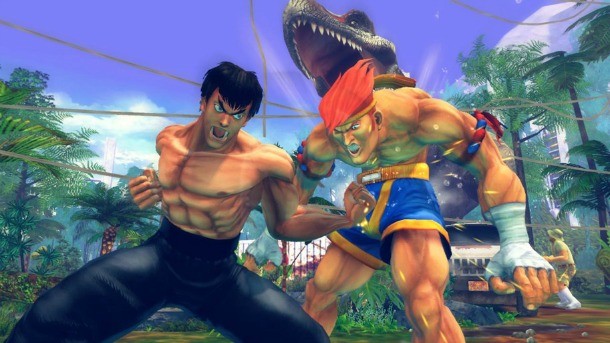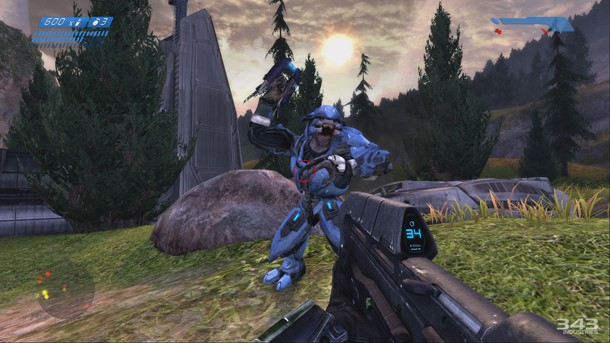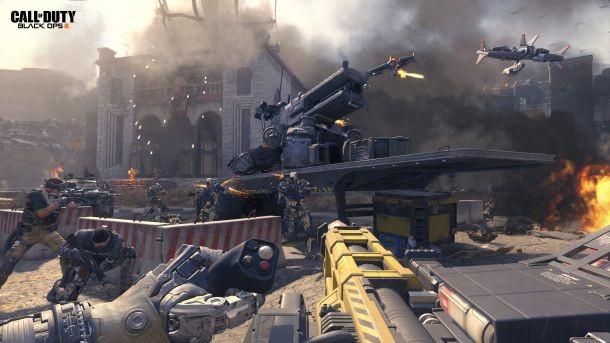Our extra-large special edition is here. Subscribe today and receive the 25% longer issue at no extra cost!
How Pro Gamers Deal With Peaking And Life After Esports

In this month’s issue of Game Informer we dove into the world of eSports, detailing how players, teams, and sponsors work with each other to make sure people who excel at games like Street Fighter, Halo, and more can make a living off their skills. Here at Gameinformer.com, we’re also taking a look at some of the periphery aspects of eSports vital to understanding the world of competitive gaming.
Every professional eSports athlete must deal with one unstoppable enemy: time. As people age, their reaction times deteriorate, making it harder to move with the speed and precision often necessary to win stressful matches. Although many eSports athletes can compete into their 30s, the question remains: is being a professional eSports athlete a viable long-term career?
Peak Performance
Studies on the peak age for reaction times (one of the most important parts of playing a game like Street Fighter, Dota 2, or Halo) often place the number at around 24, with ages before and after showing some decline. The common assertion, then, is that as players begin to age out of this ideal range of reaction times, they won’t be able to keep up with faster, more reactionary competitors. Take, for example, the ages of last year’s League of Legends World Champions, SK Telecom 1:
Heo “Huni” “Seung-hoon - 19
Han “Peanut” Wang-ho - 18
Lee “Faker” San-hyeok - 20
Bae "Bang" Jun-sik - 20
Lee "Wolf" Jae-wan - 20
All of them are fairly young and have yet to reach their reactionary peak (according to the PLOS study, anyway). Last year’s Dota 2 International champions, Wings Gaming, has a similar age grouping. According to eSports Earnings, a site tracking the earnings of tournaments across multiple games, the highest-earning age for players is 22. With a few fluctuations, the further we move away from that number, the lower the payout and number of players succeeding gets.
While eSports Earnings lists only one player, H1Z1 player Kim "omniskillz" Woo Jin, over the age of 40, a few players have managed to consistently make a name for themselves at older ages. The highest-earning player of all time on eSports Earnings, for example, is 27-year-old Dota 2 player Saahil “Universe” Arora (though much of that is skewed by The International’s outrageous prize pool). A few other people capable of renting cars in the United States also crack eSports Earnings’ Top Earning list as well.

Ryan Towey, who currently coaches Evil Geniuses’ Halo team, thinks players can still compete as they get older. “We don’t really think that there is a significant difference in our age versus reaction times, versus understanding Halo versus inherent skill,” he says. EG’s Halo players range from 23 to 26 years old, putting them slightly above the average age.
Some eSports tend to accommodate older players better than others, too. “Street Fighter doesn’t really fit into the [age] model,” says Darryl “Snake Eyez” Lewis, often cited as one of Street Fighter’s greatest Zangief players. “Many top players in Street Fighter have been playing for an extremely long time, and the general age group of the fighting game community is a bit older than other eSport games.”
Part of the reason for this is that while reaction times are important, experience offers more advantages to older players of fighting games than those of other genres. As players get older and their reaction times start to falter, they begin relying on being able to “read” their opponent and predict their movements – something that comes from experience rather than pure physical prowess. As a result, fighting games’ current top earners skew somewhat older, with players in their mid-twenties and thirties like Jason “Mew2King” Zimmerman, Ryota “Kazunoko” Inoue, and more filling out more slots in the fighting games Top Earners list.
Some players are even reaching new competitive highs as they get older. Bruce “Gamerbee” Hsiang made his biggest impact on the fighting game scene by placing second at the Evolution Championship Series (Evo) in 2015 at 36. However, Hsiang admits his age is starting to affect him. “I can’t play so much anymore,” Hsiang says. “My hands hurt if I play too much.” To deal with those strains, Hsiang applies cold patches to his hands after long sessions and before sleeping. He’s not stopping anytime soon, however; he sees himself playing past 40, and still aspires to nab one of Street Fighter’s current world championships, at either Evo or the Capcom Cup.

Aging Out
While Towey doesn’t think age is a big a factor when it comes to playing better physically, he admits younger players have another ally on their side: free time. “The first time we were competing it was just natural, it wasn’t a grind to do everything,” Towey says. “We had significantly fewer responsibilities than just playing and competing, so naturally it was what we wanted to do at all times.” As players get older and aren’t able to find the kinds of sponsorships that let them play their game of choice full-time, it becomes harder to dedicate themselves to it.
Alex Valle, one of the world’s most famous Street Fighter II players, realized in 2011 that he had to choose between continuing to compete at a high level and running his newly-founded company, Level Up Productions, which runs and streams tournaments while also helping new players get into fighting games. He couldn’t commit to both. “I wanted to play Street Fighter IV competitively, and I did, for a couple of years,” Valle says. “But as we got deeper into what we wanted to do with the company, [playing] started taking more of a backseat.” Though Valle still competes in Street Fighter V tournaments, he doesn’t practice and train as seriously as he used to.
David Philip Graham, an attorney who works with players, teams, and sponsors to negotiate sponsorship contracts, also notes that there are number of things working against any player who wants to play a game for several years. For one, while most major sports experience rule changes every year, it’s nothing on the level of what a single patch or balance update can change about a competitive game. A player’s best character can be patched into irrelevance, while tactics they may have used when coming up in the scene can be reworked or removed by the time they hit their stride.
Players also must contend with their livelihoods being tied to technological commercial products prone to obsolescence. “I mean, we’re not playing sports – these are games that have product cycles and lifetimes,” Graham says. Many scenes (like those of Street Fighter or Halo) have to contend with adapting to entirely new games every few years, with their own idiosyncrasies. Even if a player can physically compete, “they’re going to be playing a different game, or the same game with a different patch that requires different toolsets,” Graham says.
Because of this, Graham thinks players who make a name for themselves in the long term are incredibly rare. “It’s going to be super tough to have somebody who plays in eSports for 20 years, even if they have some talent,” he says.
On page 2, learn how players find new ways to make a living from their competitive fame and plan for the future.

Branching Out
In traditional sports, professional players who haven’t accrued the kinds of prominence that leads to a lifetime of sponsorship or deals (like Michael Jordan) tend to go into coaching, commentating, or other periphery roles. In eSports, that also holds true. “What I would expect [for older players] is that it’s going to be like in sports, where some tiny, tiny percentage of all players become analysts or play-by-play guys,” Graham says. “But a very tiny percentage.”
Graham thinks that while there may are opportunities for veteran players to become coaches or team managers, it won’t end up being a viable path for most. In traditional sports, for example, few players end up being in those management or coach positions. “If you think about it, there’s 60 players on a football team and half a dozen coaches. The ratio’s just not good.”
In traditional sports, players associations like those in the NFL and NHL help ex-players transition away from a competitive career by helping them work toward college degrees, find work, deal with financial issues, and plan for retirement. While some eSports teams help their players work through school between tournaments, this kind of help isn’t standard. Should a player forego a formal education in order to pursue their dream job, they’re on their own, whether they fail or succeed and eventually retire years later. “I always tell people to stay in school,” Graham says. “Like literally, don’t quit your day job.”
This doesn’t mean all eSports teams leave their players out to dry. Some, like team OpTic, have begun grooming their players into something more than competitors. From an early stage, Hector “H3cz” Rodriguez tells his players to plan for the long haul, beyond their careers as players. “I tell them that their main source of income is gonna be their ability to entertain people,” Rodriguez says. OpTic maintains a popular YouTube channel where their players stream and record videos of games like Minecraft as well as their competitive bread and butter, Call of Duty.
In doing so, OpTic and its players set themselves up to be successful even when they falter competitively by building up their fan base. By selling their personalities, they can sell merchandise or stream views, which allows them to bank on a certain amount of income later in life. “So as far as me worrying about what they’re gonna do after [they stop competing], I don’t have to,” Rodriguez says. “They know they’re preparing now, and they’re putting themselves in a position to not ever have to worry about that.”

Planning For The Lategame
Another way players can turn their 15 minutes of fame (and their tournament winnings) is to find the proper way to invest them. Joe Occhipinti works for Warren Street Wealth Advisors and helps players manage their income. “We want to help players make the most of their earning potential at a young age, so they can flourish in whatever is the next stage of their career, inside or outside of eSports,” Occhipinti says.
For Occhipinti, helping players manage their money also means making sure they keep as much money as they can, and that that money stays around for a while. “Sheltering money away for retirement, while a long way away for most of these players, has a bunch of tax advantages to it,” Occhipinti says. “Saving for your future self is a good thing during a time in your life where you generally have the fewest expenses.” Depending on whether a player has debts to play or wants to pursue college, Warren Street helps them decide what their next move should be.
In general, a few rules apply to most players. “Don’t buy an expensive car,” Occhipinti says. As with most large windfalls of money, the best way for players to make the most out of their initial earnings is to be frugal when they’re hitting their stride and invest, then reap the rewards later. “This could be their only chance to be in eSports and make money doing it,” Occhipinti says. “Seize this opportunity and save. Save ‘til it hurts.”
So while eSports may be a young person’s game, that doesn’t mean players are doomed to obscurity and poverty after their time in the spotlight. Some scenes are less prone to aging out than others, and while it may be difficult to compete in the long-term, players can make the most of their prime by investing in other opportunities early on, whether it’s building up their reputation elsewhere or investing their earnings shrewdly. If they can make it as a player in the first place, that is.
For more on the world of eSports, check out this month's issue of Game Informer, and be sure to check out all of this month's eSports stories.

Get the Game Informer Print Edition!
Explore your favorite games in premium print format, delivered to your door.
- 10 issues per year
- Only $4.80 per issue
- Full digital magazine archive access
- Since 1991









